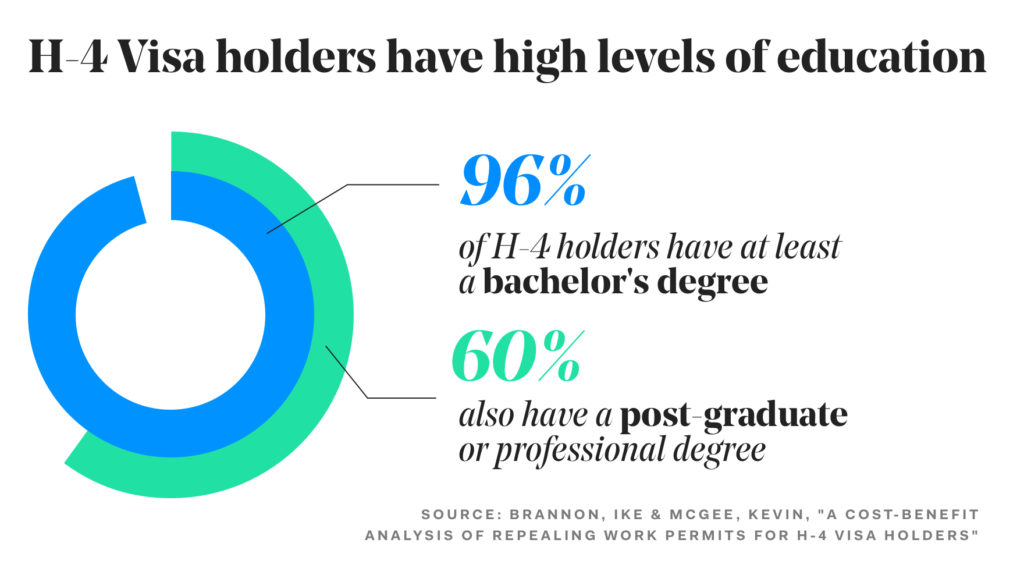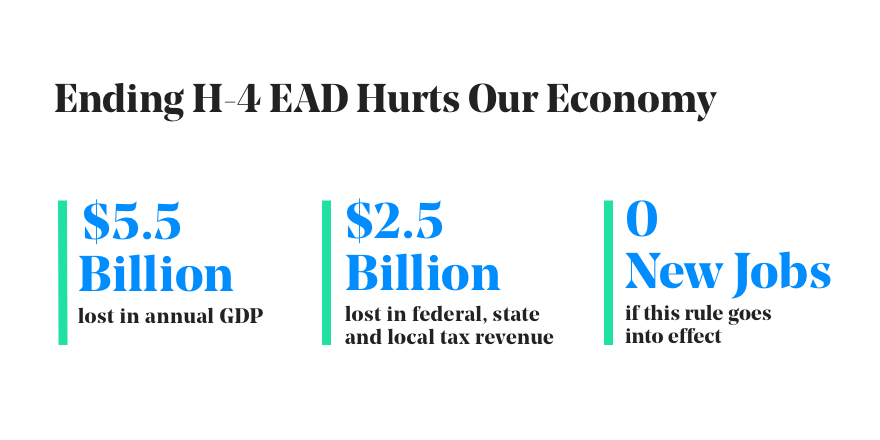Background on H-4 EAD
In 2015 the Department of Homeland Security (DHS) implemented a policy permitting certain1 H-4 visa holders—spouses of H-1B skilled workers—to apply for an employment authorization document (EAD). The goal of the policy was to help “U.S. businesses keep their highly skilled workers … [and provide] more economic stability and better quality of life for the affected families.”
While H-4 visa holders normally receive authorization to work once they have passed certain stages in the process to adjust status to permanent resident (to obtain a “green card”), they are barred from working while still in temporary nonimmigrant status. Furthermore, outdated restrictions on how many people can apply for green cards each year can significantly increase the wait time to more than 10 years for individuals from populous countries like China and India. This results in highly-educated and highly-skilled H-4 visa holders residing in the U.S. for years before being permitted to work.
Since the rule was implemented in 2015, it has been a lifeline for nearly 100,000 women and men who had felt trapped and hopeless because of the work restrictions. Despite a decade of proven success,the policy continues to be targeted by legal challenges and oppositional advocacy from immigration restrictionist groups.
The H-4 EAD rule is a smart immigration policy that should be preserved because it allows talented foreign-born individuals to contribute to the economy while living in the United States, it strengthens our skilled immigration system so that we can continue to recruit and retain high quality talent, and it promotes self-sufficiency and integration, ensuring aspiring American families and their U.S. citizen children are able to be successful in the U.S.



